Go on and get me in the corner smoke my cigarettes and drink my beer
Tell me that this world is no place for the weak
Then you can look me in the eye and tell me if you see a trace of fear
You gotta look sharp!
You gotta look sharp!
And you gotta have noooo illusions
Just keep going your way looking over your shoulder...
Or - Joe Jackson - you can sit still and actually be sharp. And pointy. And spiny.
Like a cactus.
Which is kind of a funky strategy if you think about it - store your water in fat, fleshy above-ground cisterns (stems), that you then have to protect with nasty, big sharp pointy things.
It's so Mad Max.
But dang it can be beautiful. And effective. Such as the fortress of this Hedge Hog Cactus, Echinocereus engelmannii:
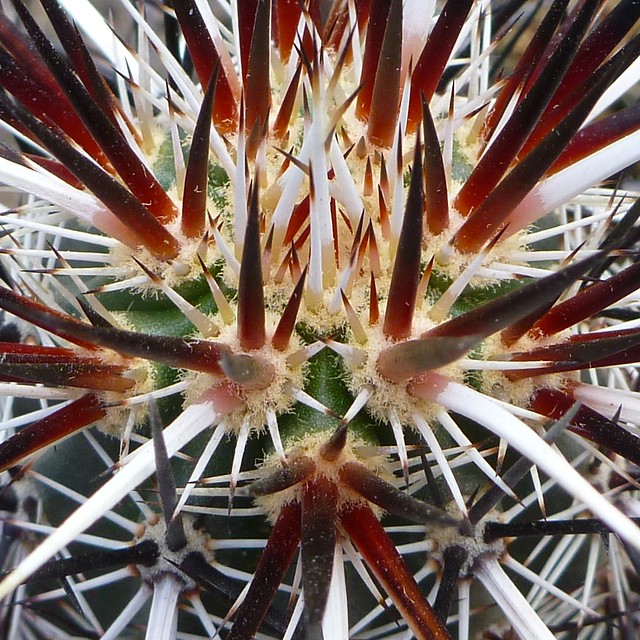
For those interested, cactus spines are modified leaves, which is why they're called "spines." "Thorns" are modified branches.
Their structure is fibers, and the hardness calcium carbonate and pectin.
The Pancake Pear, Opuntia chlorotica, is uniform in both paddles and spines:
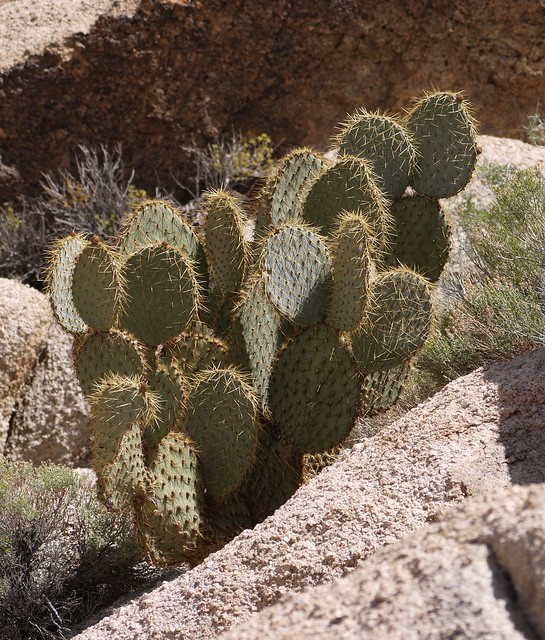
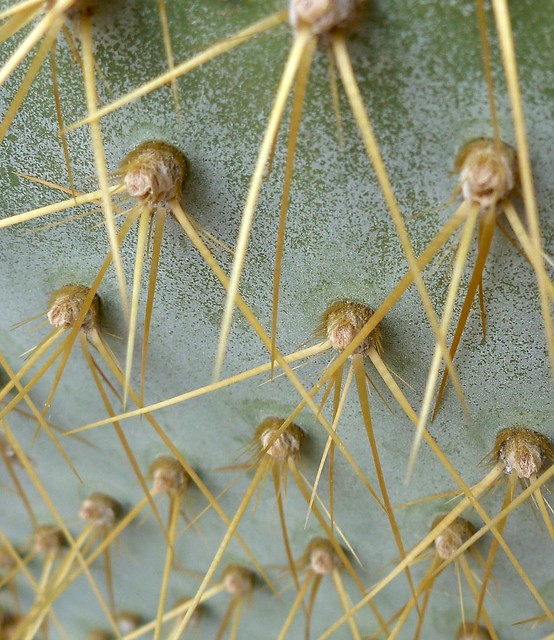
Chollas take the high density approach - as well as the jumping, attacking, and sneaking up on you approaches, too. As you can see on this Silver Cholla, Cylindropuntia echinocarpa:

The Pencil Cholla, Cylindropuntia ramosissima, also tries to cover every angle, but with much more pattern and style - looking a bit like desert DNA spirals...
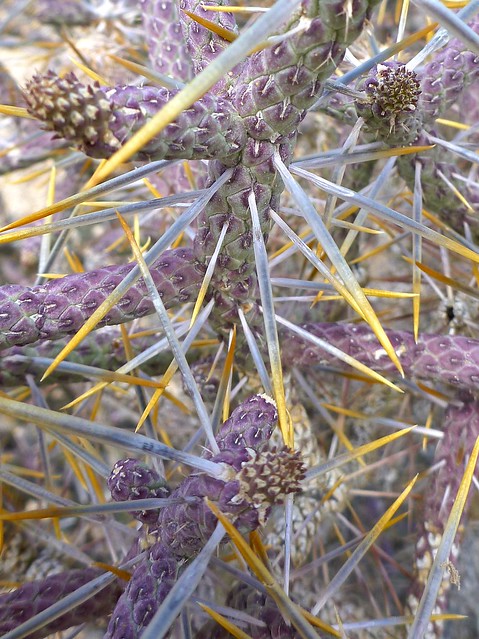
Density is also the mantra of the Grizzlybear Prickly Pear, also called Old Man's Beard, Opuntia polycantha var. erinacea, which uses long, wiry spines to seal off all access.
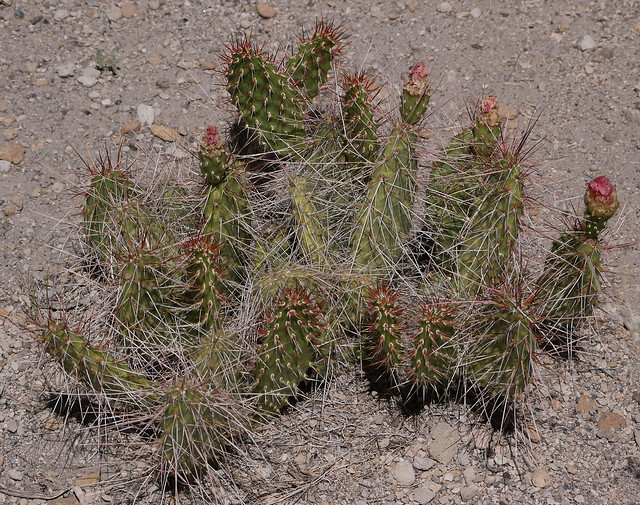
And the often near-invisible little Nipple Cactus, Mammillaria tetrancistra, uses a densely woven basket to completely hide the flesh. It does, however, need to get foragers to notice and be able to access its fruits to eat them and distribute the seeds...

Cotton Top, Echinocactus polycephalus, uses a similar all-spines strategy. And yes, one is always bigger than the other.
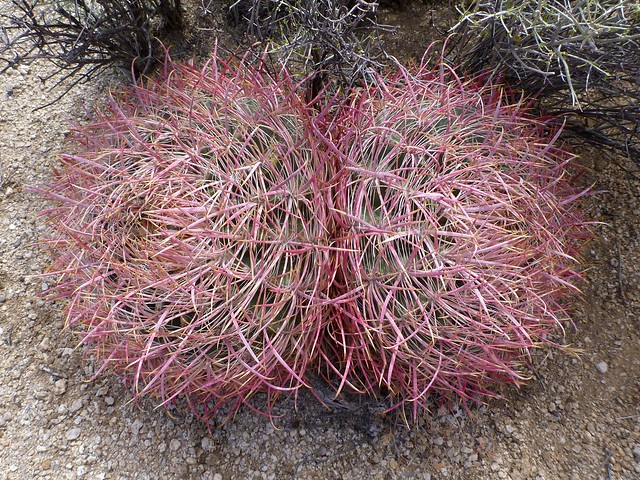
But... when cacti do want to be noticed, they do a very good job of that as well, often popping out huge, colorful flowers that target everything from sphinx moths to big beetles, birds and bats.
Here's the bloomers we saw on this year's Mojave herp holiday...
Mojave King Cup, Echinocereus mojavensis:
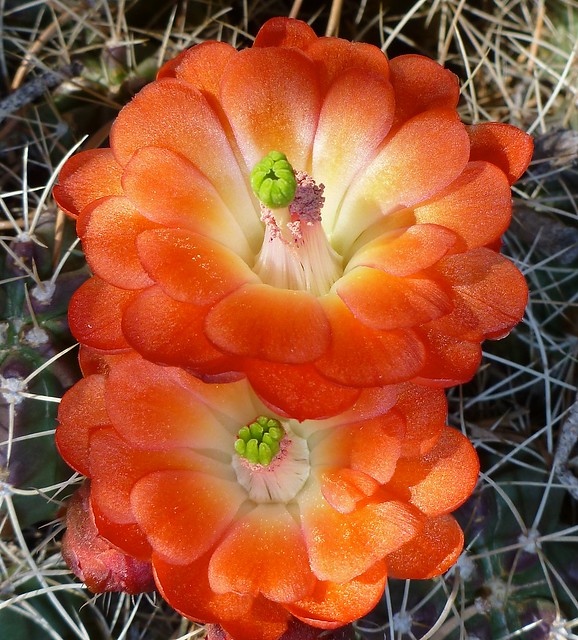
Hedge Hog Cactus, Echinocereus engelmannii:
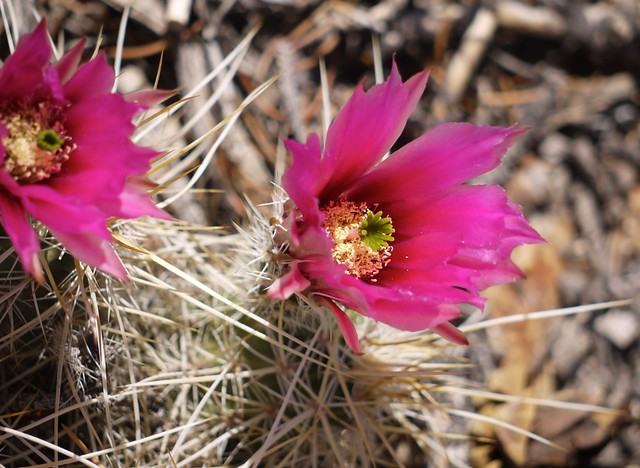
Grizzlybear Prickly Pear, Opuntia polycantha var. erinacea:
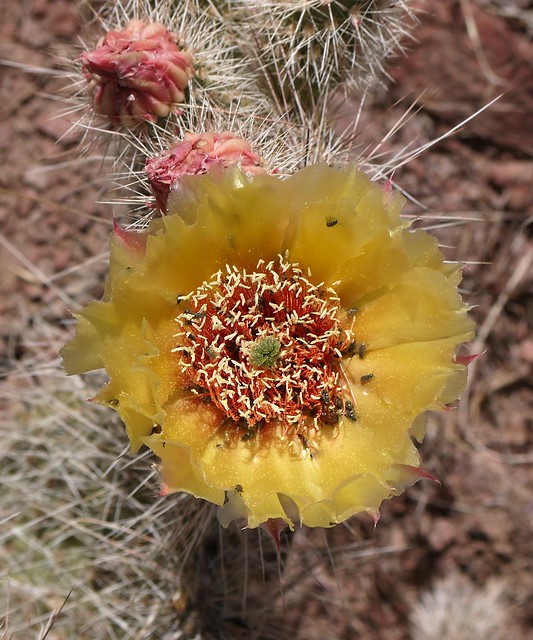
The classic Beavertail Cactus, Opuntia basilaris:

The Pancake Pear, Opuntia chlorotica:
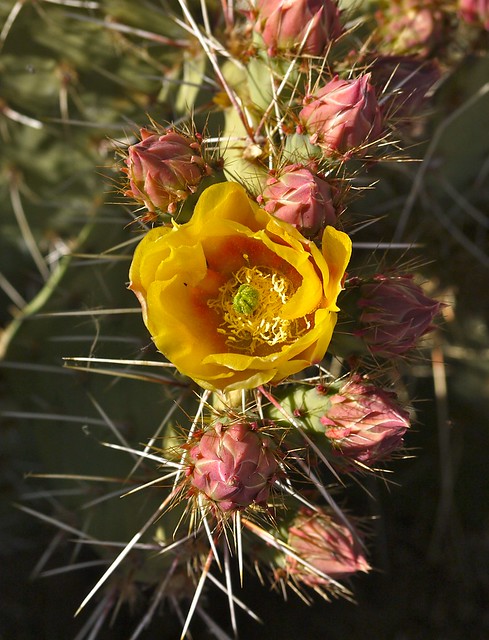
Silver Cholla, Cylindropuntia echinocarpa:

And Buckhorn Cholla, Cylindropuntia acanthocarpa:
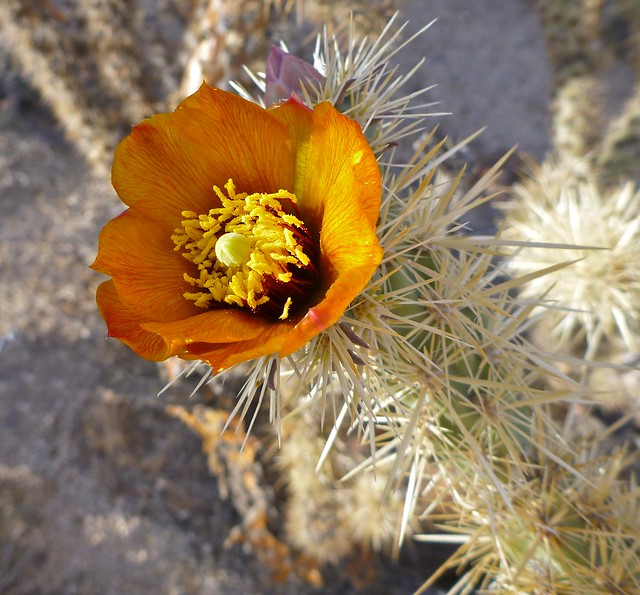
Btw - the sit-around-and-be-too-spiny-to-eat strategy also mostly works for the Desert Horned Lizard, Phrynosoma platyrhinos:
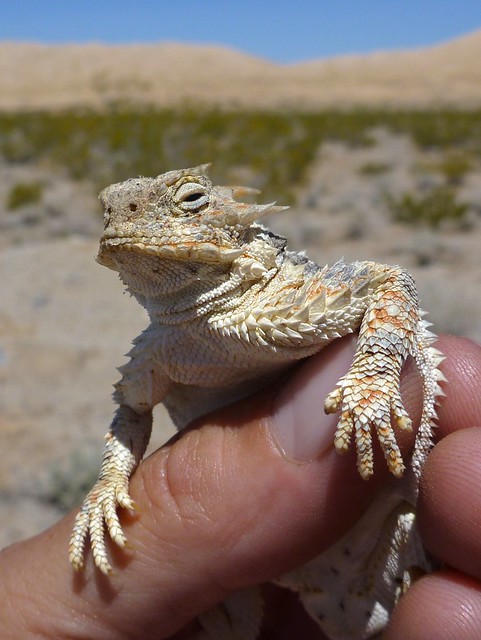
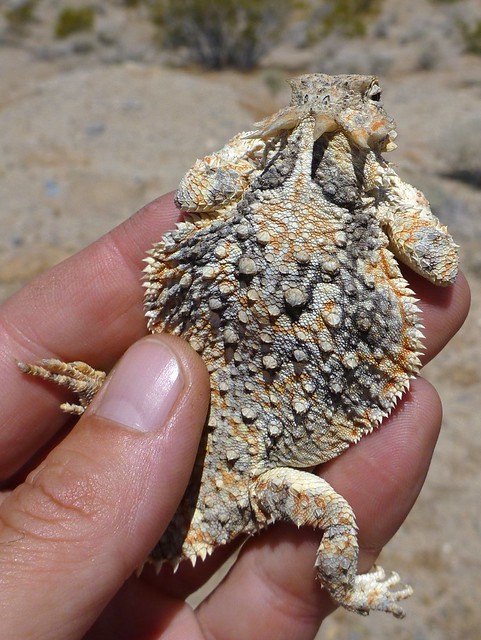
Look sharp!
====
References:
- Joe Jackson - Steppin' Out with Look Sharp!
- Wikipedia - Cactus
- CaliforniaHerps.com - Phrynosoma platyrhinos

Wonderful!
ReplyDeleteD
Wow. That's a lot of cactus diversity for one post, including some species I've never heard of. Great stuff!
ReplyDeleteI've never liked pencil cholla though...not sure why.
Blasphemy. Pencil cholla is the best cholla.
DeleteWhat a great collection of cacti! And awesome macros of the spines!
ReplyDeletewow on that Mojave king cup. Wondering about the color orange in nature now.
ReplyDeleteTotally appreciate your sharing. Thank you.
ReplyDeleteWow. SpecTACular photos, and super cool re: spines v. thorns.
ReplyDeleteThinking this is the post of the day.
I hope the name cotton top never confused anyone re: its actual texture...
And who doesn't love a Phrynosoma? I love their regal carriage. *happy sigh*
oh, duh, btw, ADORE J.J., so thanks for putting that song in my head. =)
ReplyDelete